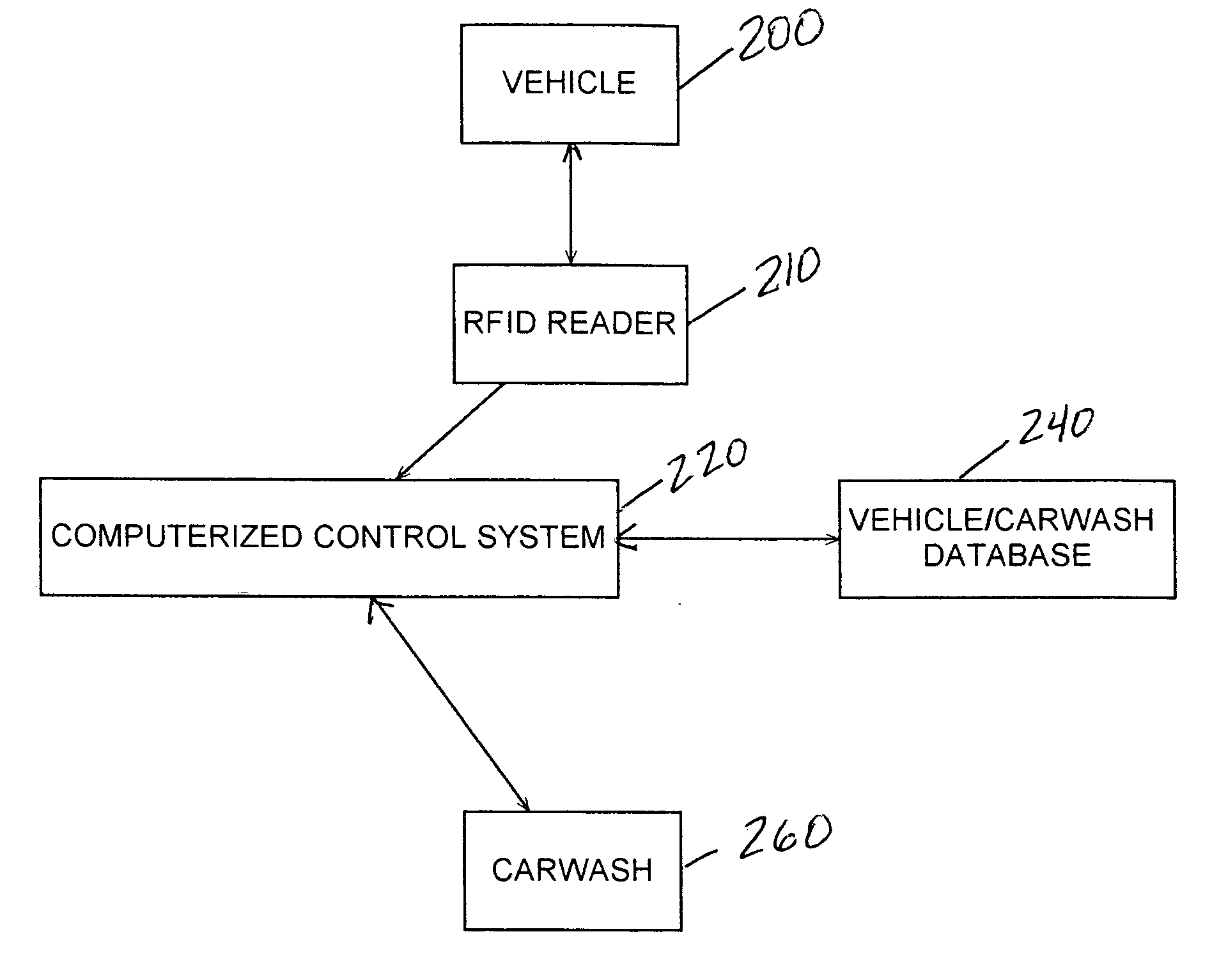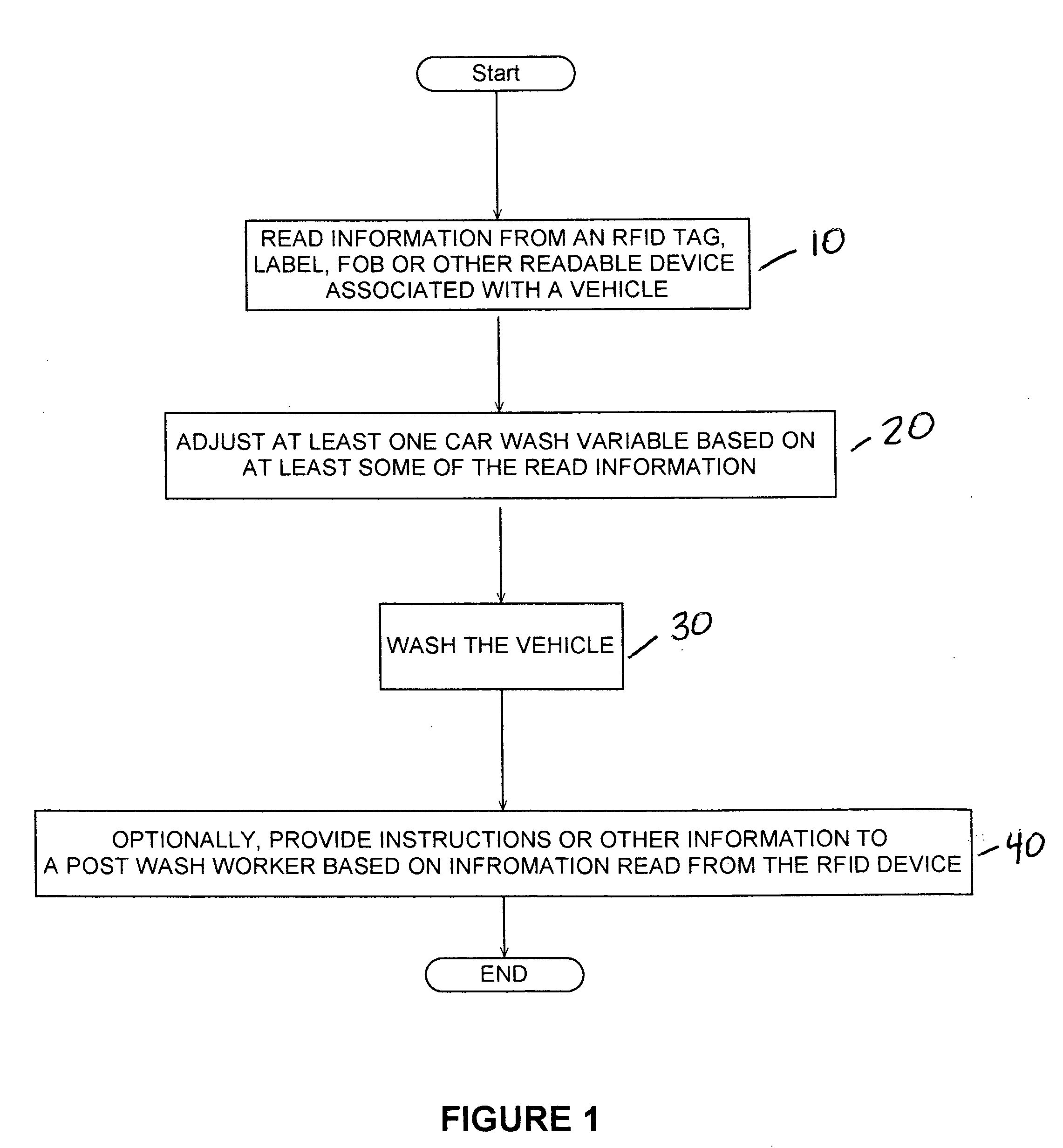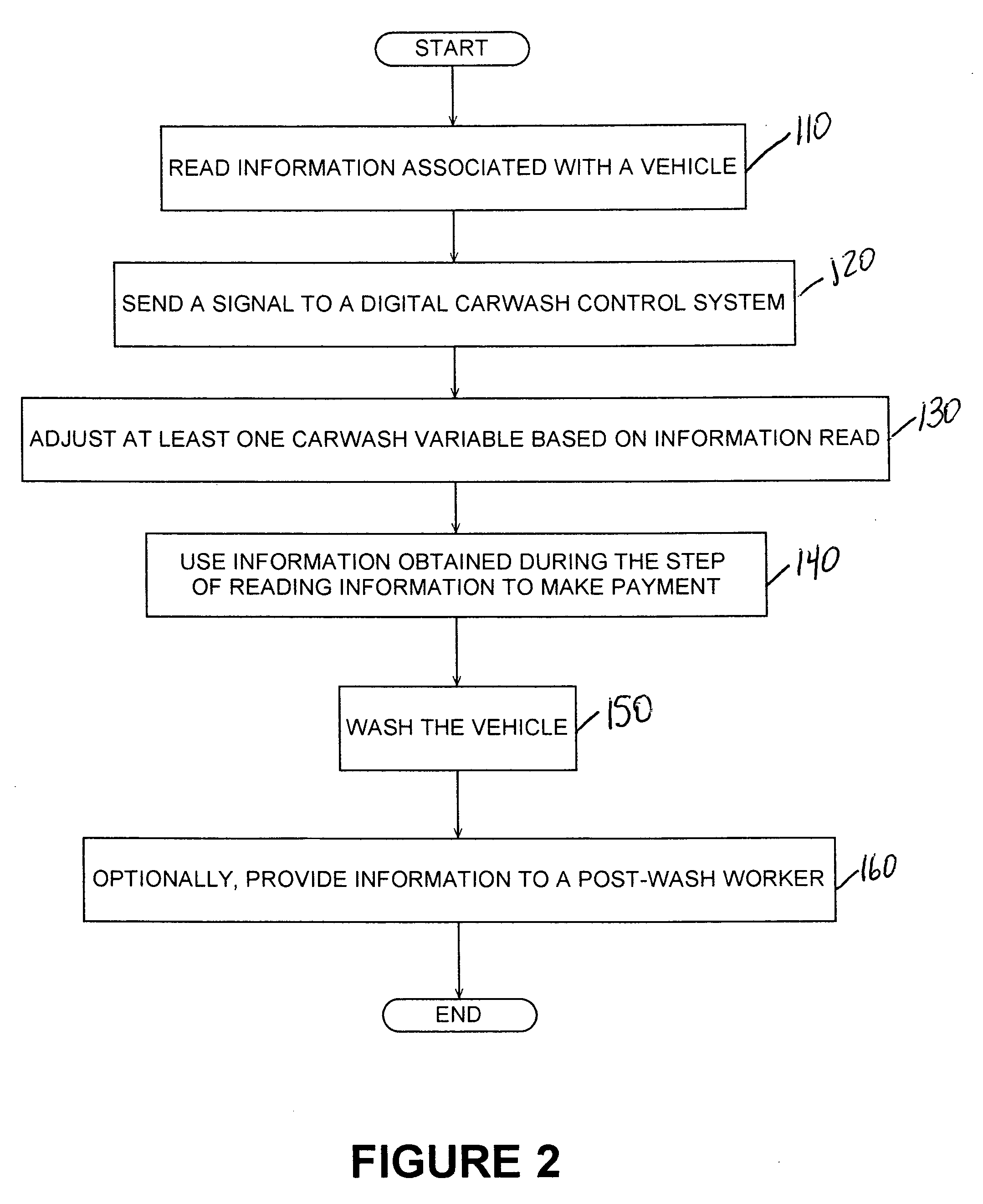RFID applications
a radio frequency identification and application technology, applied in the field of applications of radio frequency identification technology, can solve the problems of high component cost, inefficient application methods, and significant price drop
- Summary
- Abstract
- Description
- Claims
- Application Information
AI Technical Summary
Benefits of technology
Problems solved by technology
Method used
Image
Examples
Embodiment Construction
[0107] Application No. 1: Using RFID Tags on Automobiles in Parking Garages
[0108] An RFID tag or label is located on an automobile. One example of an RFID label for use on an automobile windshield is the “915 MHz Windshield Sticker Tag by Intermec. The RFID tag or label may include the digital information that identifies the car, such as the vehicle identification number or license plate number. A parking garage has numerous parking spaces, with a network of RFID readers throughout the garage. In one embodiment, there is one RFID reader dedicated to a single parking space, although many variations of this are possible.
[0109] When a car pulls into the parking space, the RFID reader reads the information on the RFID tag or label that is on the automobile. The reader then sends the information to a central computing system, which correlates the parking space number within the vehicle that is parked in parking space. The computing system may also, for example, obtain further informati...
PUM
 Login to View More
Login to View More Abstract
Description
Claims
Application Information
 Login to View More
Login to View More - R&D
- Intellectual Property
- Life Sciences
- Materials
- Tech Scout
- Unparalleled Data Quality
- Higher Quality Content
- 60% Fewer Hallucinations
Browse by: Latest US Patents, China's latest patents, Technical Efficacy Thesaurus, Application Domain, Technology Topic, Popular Technical Reports.
© 2025 PatSnap. All rights reserved.Legal|Privacy policy|Modern Slavery Act Transparency Statement|Sitemap|About US| Contact US: help@patsnap.com



